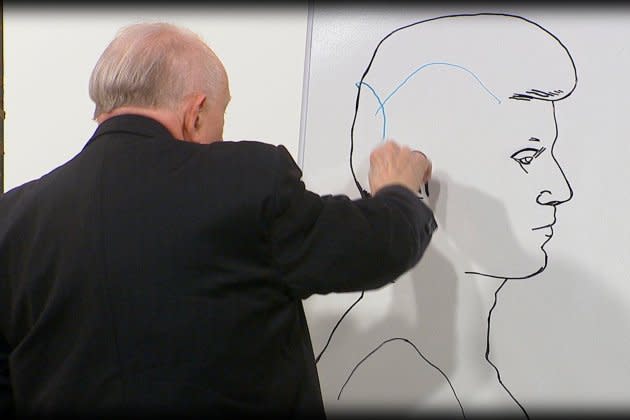JFK’s Parkland Doctors Come Forward: Oswald Didn’t Act Alone

Since this year marks the 60th anniversary of John F. Kennedy’s assassination, a number of docu-specials are rolling out to revisit (and, in some cases, reexamine) that tragic day in Dallas, Texas. None of them seem more compelling than JFK: What the Doctors Saw, a documentary featuring previously unreleased footage — and the testimony of seven doctors who were there in the emergency room of Parkland Hospital trying to save the then-president’s life after he was shot as his motorcade passed through Dealey Plaza on Nov. 22, 1963.
Premiering Nov. 14 on Paramount+, the film raises serious doubts about whether Lee Harvey Oswald acted alone in killing JFK (Oswald was shot to death two days later by local nightclub owner Jack Ruby as he was escorted through the Dallas Police building).
More from Rolling Stone
Inside the South Korean Studio Bringing K-Dramas to the World
'The Curse' Premiere: Nathan Fielder, Small Dicks, and Emma Stone
'Escaping Twin Flames': How to Break Up With an Online Dating Cult
If the Warren Commission is to be believed, two shots fired by Oswald from the Texas School Book Depository entered Kennedy from behind. The first bullet came through his upper back and out near his larynx, and the second entered the right side of his head and exited through his forehead. JFK likely could have survived the first shot, but the second proved fatal, and, though he was still breathing when he entered Parkland Hospital, a cardiac massage and tracheotomy did not take, and he was pronounced dead thirty minutes after the shooting. JFK: What the Doctors Saw throws cold water on that version of events.
Based upon my interviews with the doctors, Jim Jenkins and Robert Tanenbaum, and my own research, there’s no question in my mind there was a government cover-up.
“I became involved with the story because one of my personal physicians told me he was in the emergency room at Parkland Hospital when JFK was brought in,” Jacque Lueth, the film’s executive producer who interviewed the seven Parkland doctors, tells Rolling Stone. “He introduced me to six of the other doctors who were there that day and when I interviewed them, I began to realize their observations from Trauma Room 1 didn’t match the government story.”
She adds, “Based upon my interviews with the doctors, Jim Jenkins and Robert Tanenbaum, and my own research, there’s no question in my mind there was a government cover-up.”
The doctors in the film contend one of the bullets that hit JFK entered through his throat, meaning it was an entrance wound from the front — and that there were potentially two gunmen, with Oswald firing from the rear.
In this exclusive clip from JFK: What the Doctors Saw, two of the Parkland doctors remember the initial testimony of Dr. Malcolm Perry, the surgeon who attended to JFK (and later Oswald).
“So, at the press conference, Dr. Perry, in describing the [throat] wound here, said that he thought it looked like an entrance wound,” offers Dr. Robert McClelland in the doc clip.
“So, we were thinking there were two wounds. Had to be an entrance wound and an exit wound. That was the only way we could put it together. And so, I thought it was an entrance wound,” adds Dr. Ronald Jones, another Parkland doctor.
And then, Dr. McClelland recalls something chilling that he witnessed after the presser: “When [Dr. Perry] left the room, someone came up to him who Dr. Perry thought maybe was a Secret Service man, and he told Dr. Perry, ‘You must never, ever say that was an entrance wound again if you know what’s good for you.’”
Barbara Shearer, the director and executive producer of JFK: What the Doctors Saw, explains the documentary’s revelations to Rolling Stone thusly:
“An entry wound to the neck — or to the front of JFK’s body — indicates a shot from the front. The idea being, there had to be a gunman in front of JFK if the bullet entered through his neck. That perspective runs contrary to the common narrative of JFK being shot from behind, by a lone gunman.”
Best of Rolling Stone
